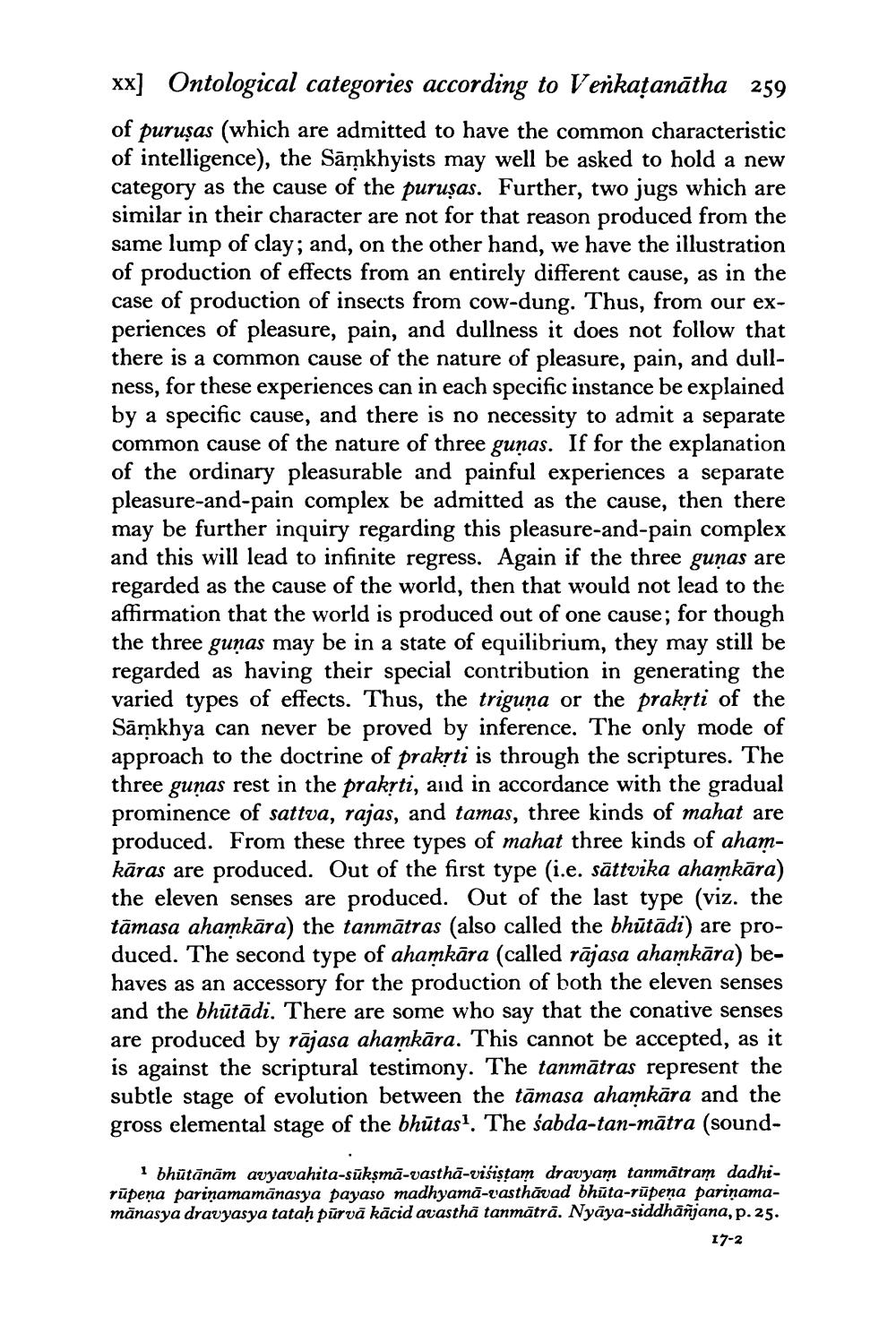________________
xx] Ontological categories according to Venkațanātha 259 of puruşas (which are admitted to have the common characteristic of intelligence), the Sāmkhyists may well be asked to hold a new category as the cause of the puruşas. Further, two jugs which are similar in their character are not for that reason produced from the same lump of clay; and, on the other hand, we have the illustration of production of effects from an entirely different cause, as in the case of production of insects from cow-dung. Thus, from our experiences of pleasure, pain, and dullness it does not follow that there is a common cause of the nature of pleasure, pain, and dullness, for these experiences can in each specific instance be explained by a specific cause, and there is no necessity to admit a separate common cause of the nature of three guņas. If for the explanation of the ordinary pleasurable and painful experiences a separate pleasure-and-pain complex be admitted as the cause, then there may be further inquiry regarding this pleasure-and-pain complex and this will lead to infinite regress. Again if the three guņas are regarded as the cause of the world, then that would not lead to the affirmation that the world is produced out of one cause; for though the three guņas may be in a state of equilibrium, they may still be regarded as having their special contribution in generating the varied types of effects. Thus, the triguņa or the praksti of the Sāmkhya can never be proved by inference. The only mode of approach to the doctrine of prakrti is through the scriptures. The three gunas rest in the prakrti, and in accordance with the gradual prominence of sattva, rajas, and tamas, three kinds of mahat are produced. From these three types of mahat three kinds of ahamkāras are produced. Out of the first type (i.e. sāttvika ahamkāra) the eleven senses are produced. Out of the last type (viz. the tāmasa ahamkāra) the tanmātras (also called the bhūtādi) are produced. The second type of ahamkāra (called rājasa ahamkāra) behaves as an accessory for the production of both the eleven senses and the bhūtādi. There are some who say that the conative senses are produced by rājasa ahamkāra. This cannot be accepted, as it is against the scriptural testimony. The tanmātras represent the subtle stage of evolution between the tāmasa ahamkāra and the gross elemental stage of the bhūtas!. The sabda-tan-mātra (sound
1 bhūtānām avyavahita-sūksmā-vasthā-visistam dravyam tanmātram dadhirūpena parinamamānasya payaso madhyamā-vasthāvad bhūta-rūpena parinamamānasya dravyasya tatah pūrvā kācid avasthā tanmātrā. Nyāya-siddhāñjana, p.25.
17-2




